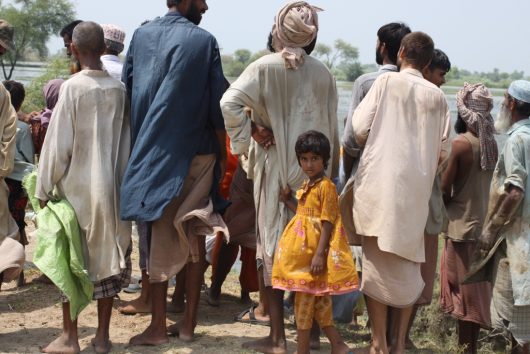The Top 10 Facts About Poverty in Pakistan

While Pakistan is one of the richest countries in Asia, poverty in Pakistan is a fact of life for most of its people. The main cause of Pakistan’s poverty rate is the fact that many Pakistanis lack basic human rights. Many Pakistanis, often women and children, are begging in the streets throughout their country.
These are the top 10 facts about poverty in Pakistan:
- In June 2016, the Ministry of Planning, Development and Reform reported that 39 percent of Pakistanis lived in multidimensional poverty. Pakistan’s official Multidimensional Poverty Index revealed that national poverty rates fell from 59 to 39 percent between 2004 to 2015. Additionally, poverty in Pakistan’s urban areas was 9.3 percent, a large contrast from the 54.6 percent in the country’s rural territories.
- On Dec. 19, 2016, Pakistan signed an aid partnership program with Australia. The program is intended to reduce Pakistan’s poverty and enhance the country’s stability, reflecting Australia’s commitment to support Pakistan’s economic prosperity. Australia’s government is also providing AUD47 million in total development assistance to Pakistan.
- Many Pakistanis live in poverty because the country’s wealth is often concentrated among a few rich families. The remainder of Pakistan’s impoverished citizens are dependent on the wealth of those families, resulting in 35 percent of Pakistanis living below the poverty line. Additionally, Pakistan’s corporations, landlords and wealthy entities pay less taxes, leaving Pakistan’s poor citizens to pay more taxes in their place.
- Poverty is the primary reason for Pakistan’s rate of child labor. Out of 40 million Pakistani children, 3.8 million work to support their families. Additionally, almost 11 million of those children work in factories under hazardous conditions. Child labor is still a large cause of poverty in Pakistan because while the country has passed many laws against child labor, those laws have often remained ignored.
- In February of 2017, Pakistan achieved a burgeoning middle class capable of fueling the country’s economic growth. Jamil Abbas, a Pakistani tailor of women’s clothing for 15 years, could finally afford private schooling for her two children. Other impoverished Pakistanis who rise to middle-class status are now able to afford a television, a refrigerator, a washing machine and have completed school up to the age of 16.
- Sixty percent of Pakistanis struggle to find food to eat. Pakistan’s women and children are the most affected by this type of poverty. On August 11, 2017, USAID’s Office of Food for Peace fact sheet revealed that $38 million was contributed to the U.N. World Food Programme for ongoing food aid to 1.6 million conflict-affected Pakistani households.
- In Nov. of 2017, the five-year Programme for Poverty Reduction (PPR) had given productive assets to 5,049 Pakistanis. PPR’s objective is to reduce the poverty of Pakistan’s marginalized communities. “We aim to do this by supporting the creation of sustainable conditions of social and economic development, including income and production capacity increase in programme areas,” said Dr. Santa Mole, the director of the Italian Agency for Development Cooperation.
- On Nov. 11, 2017, the Local Government and Rural Development Department (LG&RDD) launched a $52.4 million project to reduce poverty in Balochistan, Pakistan. Funded by the European Union, the LG&RDD project will be implemented in Jhal Magsi, Kech, Khuzdar and other districts. The project’s main focus is to support the Balochistan government in reducing the impact of economic deprivation, poverty and social inequality.
- In Dec. of 2017, the Asian Development Bank (ADB) pipeline for 2018 to 2020 included a plan to offer $2 billion per year to Pakistan. ADB intends to work with the Central Asia Regional Cooperation (CAREC) to fulfill this goal. “By cooperating and working together with other CAREC member countries, Pakistan can better unlock its vast economic potential,” said Xiaohong Yang, ADB’s country director.
- The circumstances described in these facts about poverty in Pakistan often lead to terrorism throughout the country. In Dec. of 2017, the China Pakistan Economic Corridor completed the construction of a northern Pakistan highway that will play a role in alleviating the country’s poverty. The highway will help eradicate rampant terrorism and provide cost-effective transportation to millions of Pakistanis in local towns and valleys.
USAID, LG&RDD and other entities will continue making efforts to financially help Pakistan’s impoverished citizens. However, the country’s divide between poor and rich citizens remains the main contributor to poverty in Pakistan. Further work will continue to ensure that all Pakistanis can live financially secure lives.
– Rhondjé Singh Tanwar
Photo: Flickr
